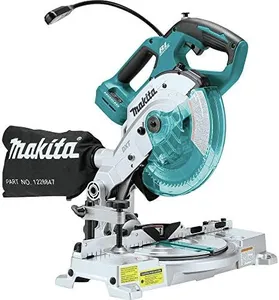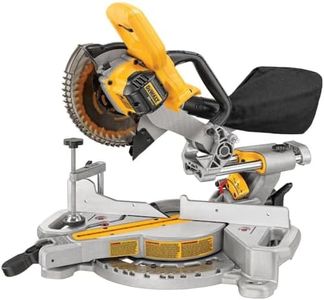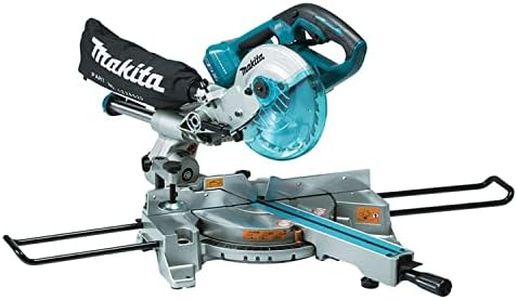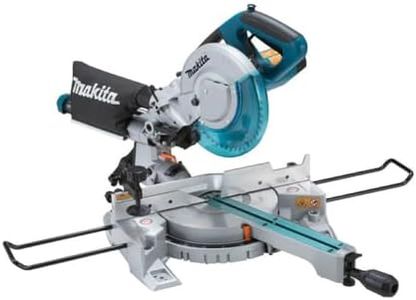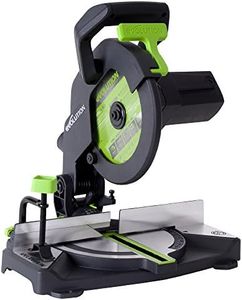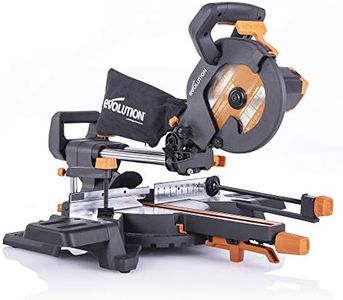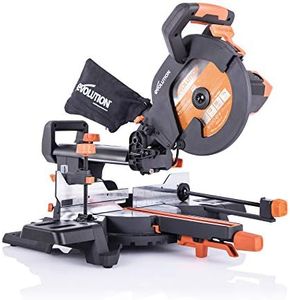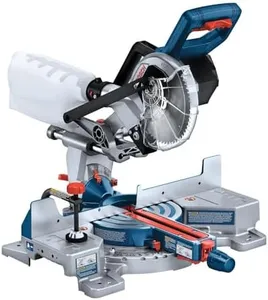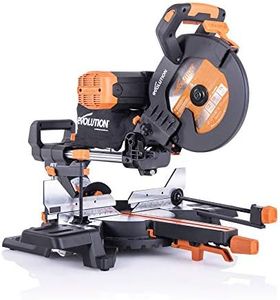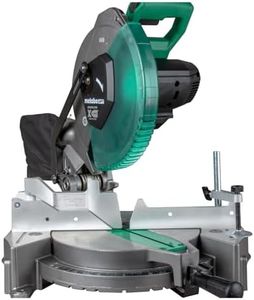We Use CookiesWe use cookies to enhance the security, performance,
functionality and for analytical and promotional activities. By continuing to browse this site you
are agreeing to our privacy policy
10 Best Miter Saw For Beginners
From leading brands and best sellers available on the web.Buying Guide for the Best Miter Saw For Beginners
Choosing the right miter saw can really simplify any woodworking or DIY projects, especially if you’re just starting out. The main idea is to find a tool that matches what you plan to cut and how often you’ll use it, without making things more complicated than necessary. It’s helpful to learn the basic features so you can understand what each spec means for your work. Focus on safety, accuracy, and ease of use, as these are especially important for beginners.Blade SizeBlade size refers to the diameter of the circular blade and affects the size of material you can cut. Most commonly, miter saws come with either a 7-1/4 inch, 10 inch, or 12 inch blade. Smaller blades are great for portability and light, detailed work or smaller trim, while the larger blades are better for cutting wider or thicker material. If you’re mainly going to tackle home improvement projects or smaller crafts, a saw with a 10-inch blade usually offers a best balance between capacity and manageability. If you expect to cut large lumber, a 12-inch model might be better. Think about the typical project size and pick the blade that fits your needs.
Type of Miter SawThere are basic miter saws, compound miter saws, and sliding compound miter saws. A basic miter saw makes angled cuts for things like frames, a compound version lets you tilt the blade for beveled cuts (helpful for molding), and a sliding compound miter saw adds rails so you can move the blade forward and back, allowing for wider cuts. Beginners usually find compound miter saws easiest to use, as they cover most needs for home projects, but if you plan to cut wider boards often, a sliding model might be a smarter choice. Think about the kinds of cuts and the size of material you'll handle.
Miter and Bevel RangeThe miter range is how far the saw table swivels left and right to let you cut precise angles, while the bevel range is how much the blade tilts for slanted cuts. Some saws tilt only one way (single bevel), others tilt both ways (dual bevel). A wider miter and bevel range lets you make more varied cuts, which is useful for trim or complex frames. For everyday tasks, the standard range is often enough, and a single bevel is typically simpler and lighter for beginners. Choose this based on the complexity of your planned projects—basic frames and trim need less, more intricate work may need wider ranges.
Cutting CapacityCutting capacity is the maximum size of a piece of wood the saw can cut at a specific angle. This depends on the blade size and whether the saw can slide. For regular baseboards and small lumber, standard saws are usually sufficient, but longer or wider boards require a higher cutting capacity. Beginners usually do well with a mid-sized saw for most home projects. Look at the maximum width and thickness you expect to cut and compare this with the saw's capacity before purchasing.
Ease of Use and Safety FeaturesMiter saws should be easy to use and come with features that protect beginners. Look for models that offer clear angle markings, easy-to-lock settings, and a comfortable handle. Safety-wise, blade guards, electric brakes (which stop the blade quickly), and dust collection ports (to keep the work area clean) are very helpful. These features don’t directly affect the cutting ability but can make your work safer and more enjoyable, especially if you’re learning.
